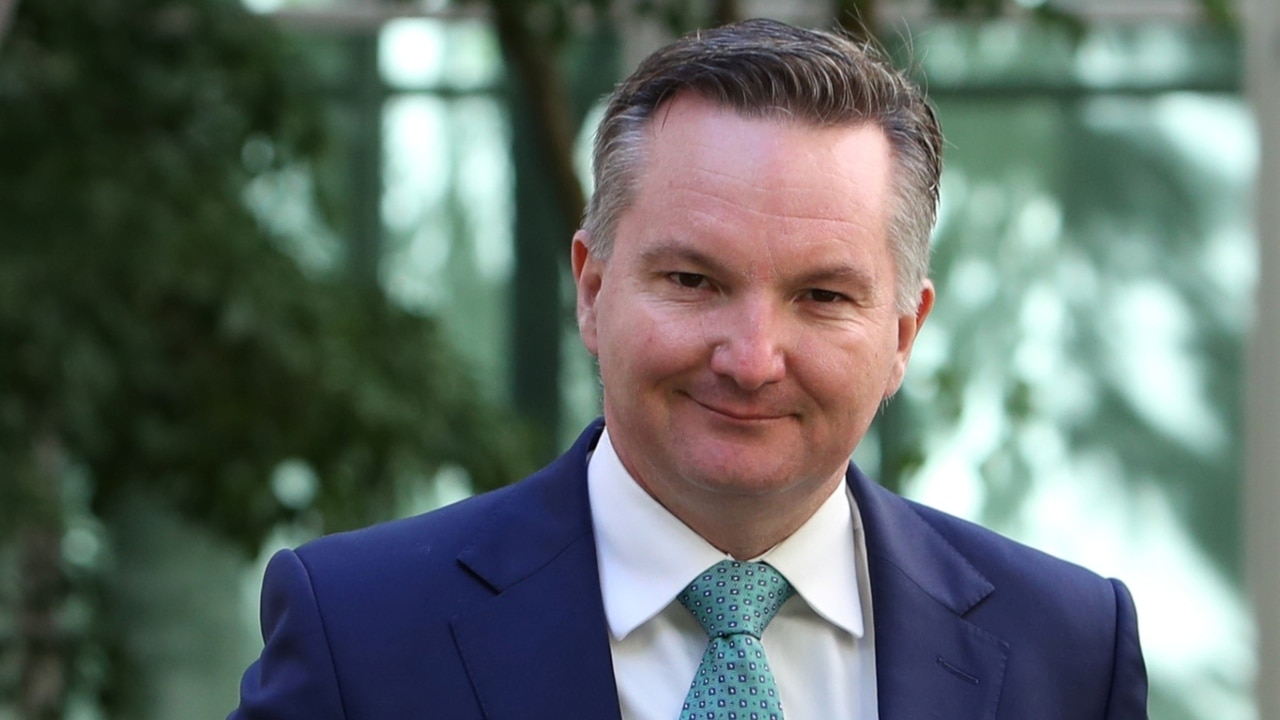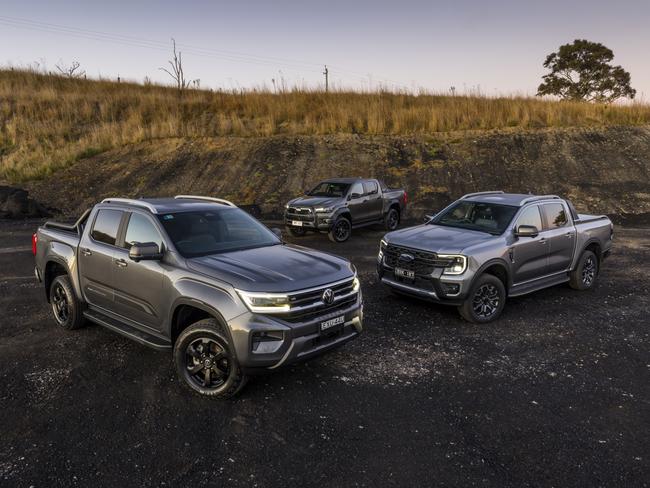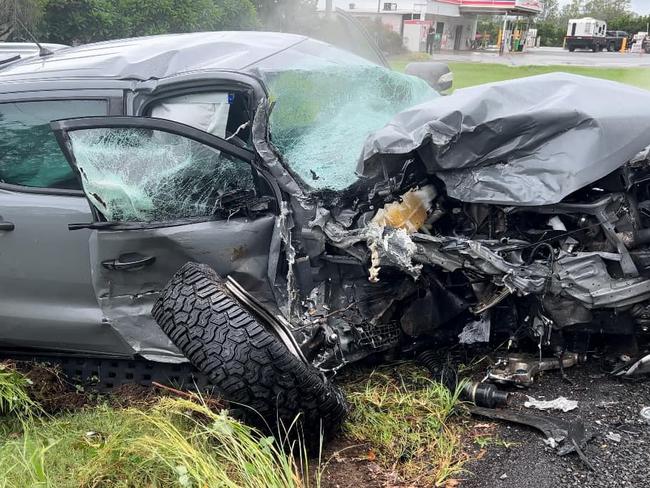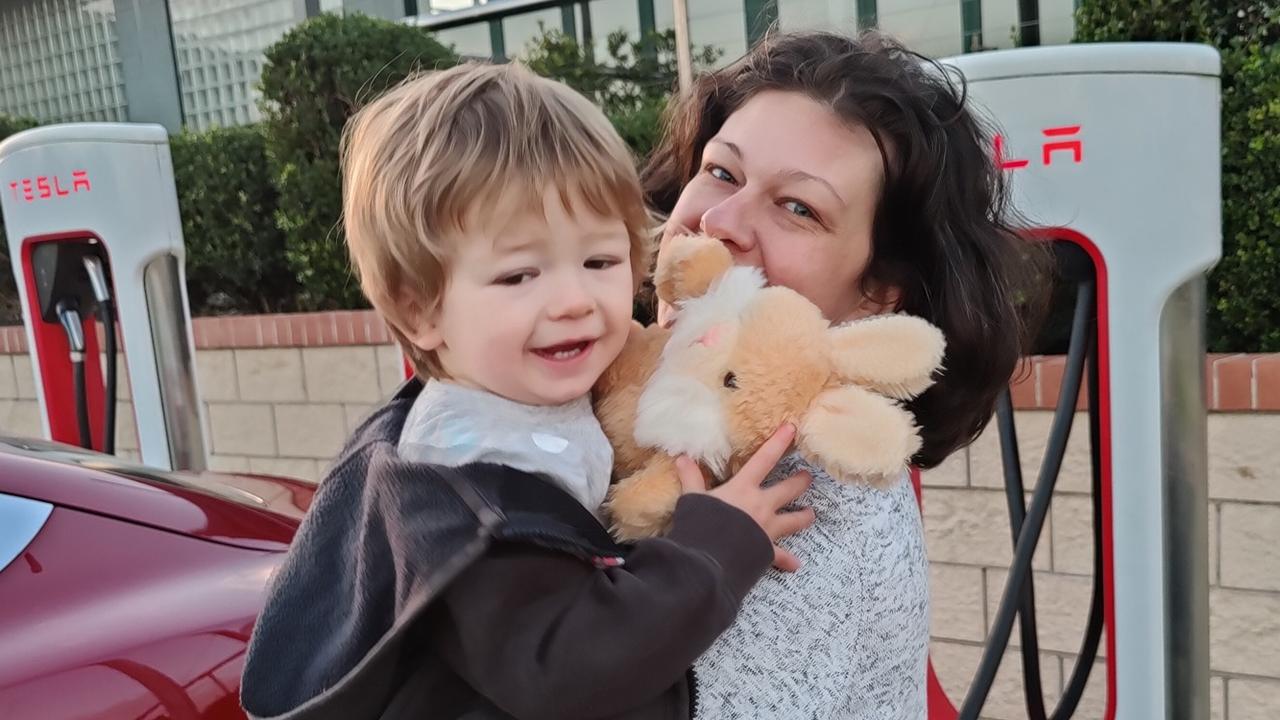‘Days of small cars never coming back’: Australia’s giant ute obsession tipped to continue
A striking image has highlighted a massive change on Australian roads in just 10 years, with some asking “what changed” in that time.

On the Road
Don't miss out on the headlines from On the Road. Followed categories will be added to My News.
Australia’s favourite car has grown by more than 80 centimetres in just over a decade, and experts say our obsession with “super-sized” utes and SUVs is here to stay despite growing calls to tax and regulate them off the roads.
A striking image comparing the size of the Mazda 3, the country’s top-selling car in 2011-12, with the Ford Ranger, last year’s top-seller, went viral over the weekend after being posted on X.
“Have Australians’ vehicle requirements really changed that much in a bit over a decade?” the user asked.
The Mazda 3 in the foreground was Australia's top selling car in 2011-12.
— taipan168 (@taipan168) May 2, 2024
The Ford Ranger in the background is currently Australia's top selling car.
Have Australians' vehicle requirements really changed that much in a bit over a decade? pic.twitter.com/R5ZG6o9QJt
One person replied, “The Mazda 3 is an excellent car, always has been. It makes me sad that so much of the new car market is dominated by similar-looking dual cabs and SUVs, I miss the days of the family sedan or station wagon to be honest, especially the latter.”
Many suggested the instant asset tax write-off was a big factor.
Others blamed the demise of locally built Fords and Holdens.
“Does it really surprise you that Falcon and Commodore buyers went to dual-cabs? Did you expect them to buy hatchbacks?” one asked.
Paul Maric, co-founder of CarExpert.com.au, said Australia’s cars had “definitely grown super-sized”.
“My question is whether people feel like they need to get a bigger car because the cars around them are bigger, because if you drive a Mazda 3 today you’ll feel very intimidated by Ford Rangers and other SUVs,” he said.

“It kind of feels like the change has been driven by these dual-cab utes. People want to get into SUVs, all the people that have small hatchbacks are pressured into buying something larger [for safety reasons]. In most people’s minds bigger is safer.”
He added, “If you’ve got a family you want something larger and it’s the same with dual-cab utes, people are putting their employees in them so naturally [they value safety].”
Maric agreed the decline of sedans and wagons was a big factor.
“Sedans and wagons have basically just disappeared off the face of the earth — for the average consumer it’s all about SUVs,” he said.
“It’s ironic today that with cost of living going through the roof people are still buying large vehicles that use a lot of fuel.”
But he argued governments’ attempts to force motorists to change their habits would only backfire.
“In Melbourne they’ve put pushbike lanes in everywhere, now in the city you have absolute gridlock and pandemonium,” he said. “People sit there frustrated, you have heightened levels of road rage.”
Carmakers have warned that new emissions standards slated to take effect next year, announced by the Albanese government in February, could drive up the cost of the country’s most popular cars.
Energy Minister Chris Bowen unveiled a watered-down version of the New Vehicle Efficiency Standard (NVES) in late March, following weeks of criticism.
“By taxing them you’re simply increasing the cost of living — there isn’t a viable alternative,” Maric said. “Manufacturers are progressively moving away from wagons and sedans in response to market demand, not just in Australia but globally. I don’t think we’re ever going back to the days of small vehicles.”
And with the move towards electric vehicles, “ironically they are heavier than the equivalent internal combustion engine”.
“As much as the government wants people to not drive and have small vehicles and use public transport, it’s not going to happen,” he said.

John Cadogan, founder of AutoExpert.com.au, argued the objections to large vehicles came from a “very vocal minority”.
“The reality is as Australians we buy something like 17,000-18,000 4x4 utes a month — that’s a massive chunk, it’s roughly 20 per cent of total vehicle sales,” he said.
“As for ‘these vehicles are so huge’, that’s ridiculous. What exactly are people objecting to? The weight or the physical size? The Mazda is 4.46 metres long and the dual-cab ute is 5.28 metres. Yeah they are a bit taller than conventional cars, but are we really suggesting 80 centimetres [longer] is worth having a tantrum over?”
Cadogan said the “simple fact is vehicles get bigger over time”.
“Look at the Mazda 3 from 2011 or a Toyota Corolla, it’s bigger and heavier every time there’s a new model,” he said.
“The carmakers have to give you more otherwise there’s no reason to buy it, it has to offer more space or more performance or features. More space means a bigger car and more features means heavier. I understand the emotional dimension to the complaints but I’m not seeing it underpinned by reality. There’s nothing that says utes are disproportionately crash-involved.”
Data from the Monash University Accident Research centre show large dual-cab utes and SUVS cause significantly more injuries to others per 100 crashes than small cars — as high as 5.82 for the Isuzu Ute D-Max compared with 2.01 for a Toyota Corolla.
“A lot of them will say it’s much more dangerous to be hit by ute than a small car — I would say it’s pretty f**king dangerous to be hit by any vehicle,” Cadogan said.
“Splitting hairs saying it’s safer to hit a pedestrian with a small car is absurd. If you care about your own safety, you’d be in the biggest, heaviest vehicle you could. Isaac Newton wrote the rules.”
Cadogan said the weight of the car was the “only thing that matters in the collision”, meaning the same objections lobbed against large utes should also apply to EVs.

“All of these EVs are at least as heavy as these utes everyone’s objecting to,” Cadogan said.
“The physics of crashing is very clear. Isaac Newton doesn’t give a s**t what the power train is or how they come wrapped up in green virtue. If you’ve got two cars, one’s big and heavy and one’s small and light, my advice if you’re going to crash is be in the big one.”
While 2023 was the one of the deadliest years on Australian roads in nearly a decade-and-a-half with 1266 fatalities, Cadogan insisted “the roads are very safe”.
“We drive [around] 200 billion kilometres a year in Australia, which is more than 30 return trips to Pluto, and only about 1000 people die,” he said.
“That’s a miracle, especially when you consider how crap the median driver is, and you think, well, half of drivers are worse than that.”
New vehicle sales hit a record in April as well as achieving the highest ever year-to-date sales, the latest figures from the Federal Chamber of Automotive Industries (FCAI) show.
A total of 97,202 vehicles were sold in April, bringing the year-to-date total to 401,654, more than 50,000 higher than at the same point last year.
The SUV category continued to dominate, representing 55.7 per cent of total market share, followed by light commercial vehicles on 22 per cent share and passenger vehicles on 17.8 per cent.
The Toyota RAV4 was Australia’s top-selling vehicle in April with 5857 sales, followed by the Ford Ranger with 5569, Toyota HiLux with 4693, Ford Everest with 2400 and Isuzu Ute D-Max with 2380.
There was a sharp increase in sales of hybrid and plug-in hybrids, which captured 18.3 per cent of the market compared with 7.5 per cent last year, but battery electric vehicles saw a slight decline to 6.3 per cent, down from 8 per cent at the same time last year.
“We are witnessing a shift in consumer preferences towards more sustainable and efficient vehicles,” FCAI chief executive Tony Weber said in a statement last week.
Originally published as ‘Days of small cars never coming back’: Australia’s giant ute obsession tipped to continue





